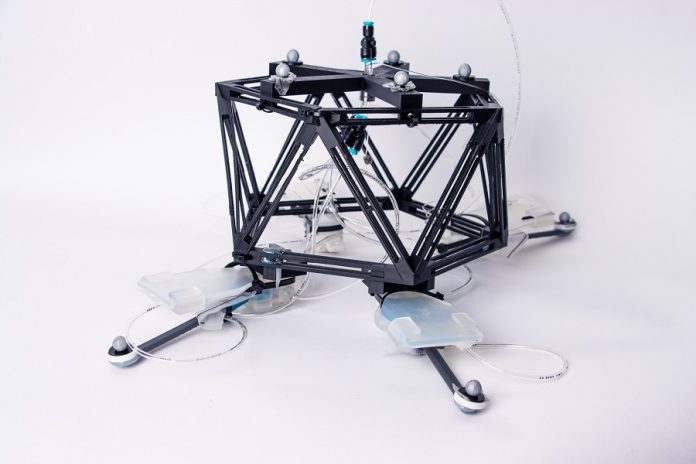
Scientists at the University of Oxford have created a new type of soft robot that moves and reacts without using any electronics, motors, or computers—just air.
These robots, called “fluidic robots,” are powered entirely by air pressure and can move in rhythm, sense their surroundings, and even make simple decisions on their own.
The research, published in Advanced Materials, shows that these air-powered machines can coordinate their movements naturally, much like living creatures that move in harmony without central control.
Professor Antonio Forte, who led the project at Oxford’s Department of Engineering Science, said the team was amazed to see how “brain-less machines” can display complex behavior simply through their physical design.
Soft robots are made from flexible materials that can bend and stretch. They’re ideal for delicate tasks, such as handling fragile objects or exploring rough terrain.
But until now, they’ve relied heavily on electronic systems to control their movements.
The Oxford team tackled this problem by designing robots that can “think” through their structure instead of through software.
Each robot is built from small, identical air-powered units, each only a few centimeters wide. These units work like the body parts of an animal—each can sense, move, and control airflow.
By connecting these blocks in different ways, the researchers can make robots that crawl, hop, or shake, all without needing a computer program.
For example, one robot could shake to sort tiny beads into different containers, while another could crawl forward and automatically stop when it reached the edge of a table. The key is that these actions happen automatically.
When air pressure is applied, the connected parts begin to move together in a rhythmic pattern, creating coordination without any central control.
Lead author Dr. Mostafa Mousa explained that this coordination happens because each part of the robot influences the others through physical contact with the ground.
Using a mathematical model called the Kuramoto model, the team found that the motion of one limb affects the others through shared forces like friction and rebound, leading to synchronized motion—just like fireflies flashing in unison.
The discovery could help design future robots that are more energy-efficient and adaptable, especially in environments where computers or batteries may not work well, such as outer space or deep underwater. The team hopes to develop larger, untethered versions that can move freely without external air supply.
Professor Forte said this research marks a shift from “robots with brains” to “robots that are their own brains.”
By embedding decision-making into the robot’s body, these machines could react faster and more efficiently to the world around them—offering a glimpse into a new generation of intelligent, self-powered robots.



